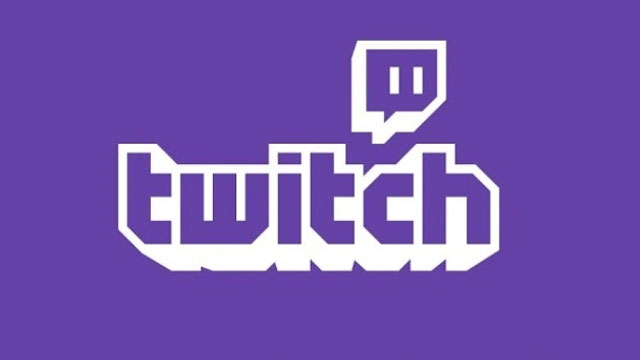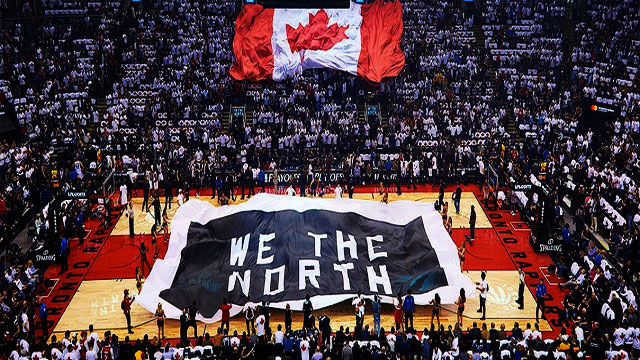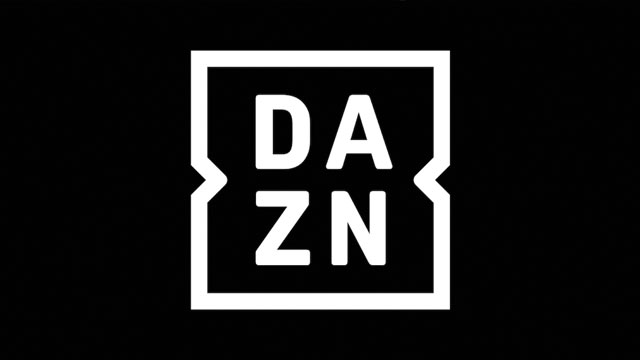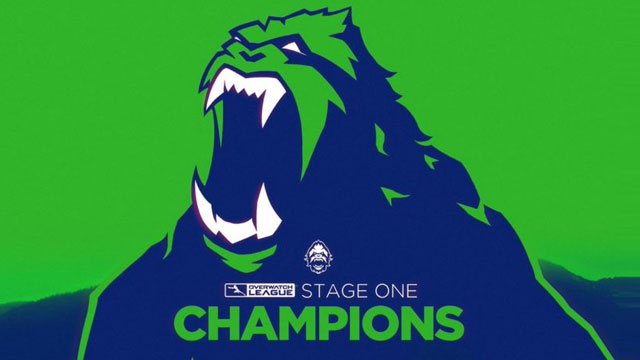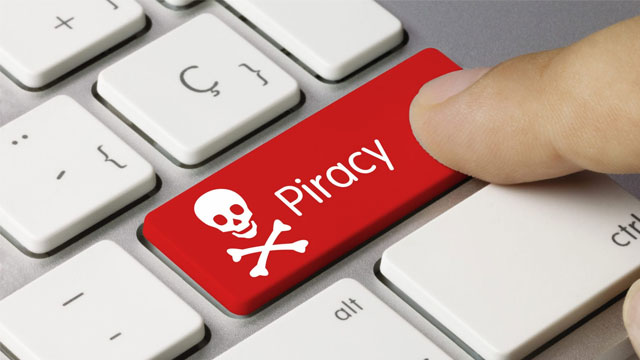The House Of Mouse’s Over-The-Top Service, Disney +, Launches In Canada
On November 12th, Disney launched in Canada its streaming service, Disney+. Many articles have been written about it and most have been detailing on what platforms the service would be available, what content would be present at launch and in the near future as well as its cost; the most complete reports written about it have even compared to other OTT services like Netflix, Amazon Prime Video, etc.
All this is absolutely fine but very few articles have highlighted what sets Disney+ aside from its streaming competitors on a business standpoint and how Disney broadcasting directly to Canadians without dealing with Canadian operators is bound to impact the Great White North’s market in a big way.
Let’s be clear; Disney+ is not just another streaming service; it is a juggernaut, a top world brand with mass appeal one needs to look no further than its rocky launch due to high demand to see it; however, unlike its competition in the streaming world, it’s the only service which owns the rights of its entire collection which includes not only all the Disney and Disney Channels back catalogue, but also Marvel, Pixar, StarWars, and National Geographic libraries of content.
Netflix, Prime Video, and the likes are massively investing in producing their own original content but they still heavily rely on distribution deals; when Netflix pays $100M USD to retain the streaming rights of Friends for one year; it costs Disney+ nothing to stream every season of the The Simpsons as its parent company has acquired Twentieth Century Fox and the Disney vault is full of content that’s been more than amortized; including 13 of the 20 highest-grossing movies of all time.
Buena Vista bringing Disney+ to Canada is not only going to impact the Canadian streaming field but it will also heighten the effect of cord-cutting on Canadian television as we know it.
Streaming Services Flourish As Canadian TV Sees A Massive Drop In Subscribers
There’s a misconception that streaming services are competing against one another and that people will subscribe only in addition to watching live television; however, considering that the median age of TV viewers is 55+ and younger audiences are gravitating towards digital platforms; it is not far-fetched that OTT services are directly competing with tradition broadcasters and that while digital services is ending the decade with an over 450% subscription growth; 2019 has seen one of the largest drops in Canadian TV subscribers which followed the trend from the previous years and isn’t a phenomenon expected to end in the upcoming ones, as pointed out by Convergence Research.
Disney +
Disney is betting big on its new streaming service and unapologetically project to reach between 60 and 90 millions subscribers globally within the next 4 years which is quite aggressive considering that these are near Netflix’s current subscriptions numbers but its lower price point is definitely an asset offering multiple 4K HDR streams for half the cost of Netflix same content quality.
An interesting perspective comes from the most emblematic former CEO of the company, Michael Eisner, who suggests the platform was created to keep Disney’s most beloved brands and franchises off other streaming services.
Amazon’s Prime Video
There is no coincidence in Amazon launching its Prime Video streaming service in Canada just a couple of weeks after Shomi, Rogers and Shaw’s failed streaming service shut down. From day one, Amazon has been a threat to Netflix and Crave and rightfully so as the video streaming service being bundled with free 2-days shipping could be presented as an unmatched value with dual appeal.
And it’s working: not only the number of Canadian Prime memberships has grown by 80% in its first year but the number of Amazon orders placed by Prime members has also doubled.
Netflix
Among the 3 big streaming services, Netflix is the most expensive one and is the only one that entire business is dependent on subscriptions. The arrival of competitors is already impacting Netflix and its 6.5 million Canadian subscribers as the Los Gatos firm has experienced a slow down in growth.
Even if it has generated close to $800 million in revenue in Canada for the first nine months of the 2019 fiscal year, its massive debt is putting pressure on the service to stop being ad-free which has been a pillar of its offering since day one.
Canadian Twitch Megastar Shroud Signs Exclusivity Deal With Microsoft’s Streaming Platform Mixer
In October, Michael “Shroud” Grzesiek, one of the biggest Canadian broadcasters you might have never heard of, and one of the top Twitch streamers, announced via Twitter that he would abandon the Amazon-owned platform which dominates the market and that he would stream exclusively on Mixer which is owned by Microsoft. The move came only a couple of months after Mixer snatched Twitch’s top creator, Tyler “Ninja” Blevins.
It’s easy for those not familiar with the gaming industry to recognize the true value of these deals Ninja has a social footprint of over 41 million followers/subscribers and earns an average of $50,000 per hour to stream games online; he reportedly was paid $1 million to play a newly released EA game for an hour. If the terms of these exclusivity deals are not public; Bloomberg has estimated that Shroud and Ninja are getting as much as $40 million dollars over three to five years just for streaming on Mixer and this figure does not take into consideration brand deals and other partnerships these streamers have. These two moves have had on the livestreaming market the magnitude of Howard Stern’s departure from terrestrial broadcast radio to satellite radio.
To fully grasp what is happening; it is important to understand why tech giants like Microsoft and Amazon are fighting a war for the gaming space and what are their short and long term goals.
Michael “Shroud” Grzesiek
When Shroud left Twitch in October he was the 2nd biggest streamer on the platform with over 7 million subscribers.
If a couple months later only a fraction of his audience has followed him to Mixer, Shroud has praised the community-vibe on his new platform and echoed a sentiment that is shared online about the toxicity of the Twitch community compared to Microsoft-owned service.
The exclusivity deal might not be just about growing Mixer’s audience. Many industry insiders have made the hypothesis that streamers like Ninja and Shroud will play a key part in the marketing strategy of Microsoft’s next generation console launching in 2020.
Imane “Pokimane” Anys
Very few Canadian broadcasters can brag about having their own toy figurine; Pokimane is one of them. The Moroccan-Canadian who sits atop of the female streamers list on Twitch might be the next top tier creator leaving the Amazon-platform for Mixer.
She has recently predicted that due to the platform very vague terms of services, she expects to be banned from Twitch in 2020; this gesture seems more like a subtle invitation for Microsoft to step in and scoop her.
2020 is already shaping to be a great year for Pokimane as she will join Ninja for a cameo in Disney’s blockbuster Free Guy with Ryan Reynolds.
Tyler “Ninja” Blevins
There are a lot of similarities between Ninja moving to Mixer and Howard Stern joining Sirius but there is one big difference: where signing the radio shock jock was done to increase subscriptions; it seems that the live streamer move was made primarily to popularize the appeal of the Microsoft-owned platform to other top content creators.
A lot can be learnt from understanding why Ninja left his throne of the Amazon platform; one of the main reasons cited by his manager and wife is the inability to work with Twitch on building out his brand outside gaming and based on recent developments including the announcement of a collaboration with streetwear giant Adidas it seems like the move is paying of for Blevins.
Tech Giants Competing For The Gaming/eSports Space Is A Long Term Play For The Cord-Never Generation
Canadian broadcasters are already feeling the impact of cord-cutting when it comes to TV subscribers, but they are overlooking the generation shift happening: in a poll, Pew Research has found that 61% of 18-29 in North america primarily watch content online via streaming services and that by 2021, there will as many cord-nevers, adult-aged consumers who have never paid for a cable or satellite subscription and likely never will as cord-cutters. Within the next 10 years, at least 1/3 of Canadian households will have cut the cord.
If the high cost of cable compared to reasonably-priced online alternatives is a major factor when it comes to cord-cutting, for cord-nevers, it is the lack of compelling, original content, catering to them and the ability to watch whenever and wherever which are often cited. This is why tech giants are massively investing in game streaming; it is by far the most consumed online content by Millennials and Gen-Zers.
In many ways, video streaming services focused on user-generated content are having on television broadcasting the same way Napster 20 years ago and Soundcloud in the last few years have impacted the music industry; and to paraphrase the legendary Chuck D, from Public Enemy, who called Napster “the new radio”: YouTube, Twitch, and Mixer are the new TV; they have allowed the “little man” to directly engage the public and participate in the broadcasting business which access had been gated and dominated by a few big media groups for too long.
Amazon’s Twitch
The Amazon-owned platform has a whooping 73% share of the live streaming market and even if gaming is the content the most streamed and consumed by its audience, non-gaming live streams are on the rise.
Twitch came under fire in 2019 for refusing to ban controversial Saskatchewan-based streamer Natalia “Alinity” Mogollon for animal abuse despite the public outcry and using its recently gone to Mixer top streamer, Tyler “Ninja” Blevins’ channel to promote pornographic content.
On top of losing 2 of its 3 top streamers, Twitch has been criticized all year long for having a double standard or lack of consistency when it comes to applying sanctions to streamers violating its terms of services.
Microsoft’s Mixer
Microsoft’s strategy is a massive gamble that already starts paying of: the modest growth of subscribers to the service is already putting a dent on Twitch’s hegemony, many talents are switching to its platform, and when Disney sent Luke Skywalker himself for a crossover event between their billion dollar franchise, Star Wars and gaming sensation, Fortnite; Mark Hamill was playing with Ninja, on a Xbox and it was streamed live on Mixer.
Launched in 2016, Beam was re-branded as Mixer shortly after its acquisition by Microsoft. Since then the service has been fully integrated into the Redmond firm’s Xbox division and a lot of money is being invested in its future even if Mixer might dissolve into Microsoft’s upcoming xCloud platform.
Google/Alphabet’s YouTube Gaming
YouTube still has the second largest market share when it comes to games live streaming but the Google-owned company only seem to care about legacy media corporations embracing its platform and is seen by many of the content creators that made it what it is today feeling abandonned.
In 2019, we’ve seen the subscribers of one of its biggest creators getting suspended en masse for posting an emote; and its top creator, PewDiePie who reached the 100 million subscribers milestone, start partnering and streaming exclusively on the blockchain-based DLive giving away tens of thousands of dollars and a subscribers boost to content creators using the alternative platform.
The Raptors Winning The NBA Breaks Audience Records
In June of 2019, the broadcasting of the NBA finals have broken several audience records in Canada including an average audience of 7.7 million viewers for Game 6; the game that has seen the Toronto Raptors win the NBA title totaled 15.9 million unique Canadian viewers; nearly half of all Canadians tuned in at some point during the game and an audience peak of 9.9 million watched the final minute.
If Canadian pride and supporting a fellow Canadian team has without a shadow of a doubt been a very important part, explaining these huge numbers by this single factor is a blinding over-simplification which hides a key factor that could be used by traditional sports broadcasters to increase their audiences and attract new ones: Canadian attitudes when it comes to sports has changed.
Hockey might reign supreme in the hearts of Canadians, and this is not going to change in the foreseeable future, but there is disconnect between what sports they are interested in and what sports Canadian broadcasters are covering; eSports is a good example of this: according to Mintel, 20% of Canadians consider eSports as important are traditional sports and more Canadians follow eSports than the CFL and yet on non-specialty sports channels, there is barely any coverage of eSports yet CFL coverage has remained the same for years.
Game 6 was just the top of the iceberg when it comes to Canadians’ interest for the NBA; when Kawhi Leonard returned to Toronto with the Clippers, the game broke another audience record; it was just a regular game.
If basketball is popular among Canadian millennials and Gen-Zers are there any other sports that Canadian broadcasters are not taking full advantage of?
Today‘s Opportunities Squandered By Domestic Traditional Broadcasters Are Guaranteeing Tomorrow’s Success For Foreign Streaming Services
The way people experience sports has changed; the most famous sports teams have now become worldwide lifestyle brands that generate billion dollars of revenue; it is no longer just your local team you grew up with.
In 2010, the UEFA Champions League’s team Paris Saint-Germain or PSG launched an app which included a geo-localized map on which fans could find other fans in their area; in Vancouver there were only 2, including the author of this post; as of December 2019, the Vancouver PSG’s fanclub Facebook group counts almost 3,500 members and organizes events in British Columbia on a regular basis. This number has nothing to do with an increase of French citizens in Vancouver and everything to do with the Parisian team becoming what Nike defines as a powerful global brand and which star players like Neymar or Mbappe have a tremendous social following that is used to promote the team’s partnerships with iconic street fashion brands like Air Jordan that transcend the boundaries of soccer. The same is true for the Toronto Raptors and their association with acclaimed artist Drake.
Looking on Canadian social media in 2019 gives a different outlook on what sports teams and events Canadians are embracing; whenever there’s a UEFA Champions League match day, the top trending topics on Twitter and Facebook in Canada are the teams competing; the ICC Cricket World Cup has been among the top Canadian trends in June 2019 while the tournament received barely any coverage from traditional sportscasters.
If this audience shift when it comes to sports seem to have gone unnoticed by established Canadian media groups, new players eager to enter national market like DAZN are betting on these sports that aren’t traditionally Canadian pastimes and openly jumping on the occasion and purchasing rights of these foreign leagues and events at a low cost due to traditional broadcasters lack of interest in them.
Another NBA franchise in Canada could be sustainable
Before some bring up that Canada already had a second franchise that failed; this was 20 years ago. Metro Vancouver’s population has grown by more than a half million and the NBA transcending the cultural boundaries of basketball is barely a decade old.
Canada is home to 7 NHL and 3 MLS but only 1 NBA team; based on the recent basketball audience records there’s a case to be made for the country getting a second NBA team; especially as the Toronto Raptors with their savvy branding and “We The North” tagline have shown how to make it successful.
DAZN knows what Canadian broadcasters don’t
By bringing the streaming wars to sports, DAZN is proving once and for all something that has been theorized for a few years now: the future of mainstream broadcasting is in niche and branded content.
DAZN’s rights strategy is fascinating and learning from its chairman always yield a lot of insights when it comes to the inevitable domination of aggregated over-the-top services is eye-opening.
Canadian eSports teams are quite bankable
Nothing shows the paradigm shift in attitudes towards sports than eSports, and it’s no surprise if both NBA and NHL teams are heavily investing in it and this comes from the leagues who wants all franchises to have eSports teams.
Like all major sports; eSports has become pop culture phenomenon that attracts all kinds of investors including popular artists and the top teams are brands that packs stadium with sellout crowds like the Vancouver Titans.
Looking Forward To 2020
The year ahead is bound to be interesting and there are some entertaining questions that need to be answered. Are smart speakers going to finally disrupt the radio industry in a meaningful way? Once new Apple device owners are done with their 12-months complimentary Apple TV+ trial, how many are going to convert and become paid subscribers? How many paid streaming services can the Canadian market sustain?
When it comes to predictions, here are a few thought-provoking, yet safe, bets.
More Streaming Services Will Result In The Rise Of Piracy
With the multiplication of streaming services comes the multiplication of original content which people will want to consume without having to subscribe to every streaming service available so piracy is bound to make a comeback.
This epiphenomenon is already apparent when looking at the most illegally downloaded tv shows of 2019 and it will only escalate to a situation similar that HBO’s Game of Thrones was in 2016 where customers justify piracy on the prohibitive cost of multi-service subscription. For streaming services solely relying on subscription it could be very costly as it’s already been reported that Netflix may be losing almost $200 million every month due to piracy.
Games Livestreaming Will Burst Its Bubble or Reach a Plateau
Gaming and eSports in particular are a billion dollar industry in which the valuation of teams can reach hundreds of millions and several teams passing the hundred millions mark; the year-over-year revenue increase of eSports’ revenue is impressive but experts are being cautious and expect a deceleration in growth to correct the market and avoid a crash.
This isn’t to say that the gaming audience isn’t bound to keep on growing; as the latest Game Awards, the brainchild of Canadian journalist Geoff Keighley, have demonstrated. The ceremony has become the most watched awards show on the planet and thus without the support of a single traditional broadcasting partner.
More People Will Stream The Olympics Than Watch On TV
The Summer Olympics are the most watched sporting event in the world so there’s no surprise if 85% of Canadians tune in to watch one or more of the events; however, a new trend has appeared in the last decade and it is Canadian viewers shifting their viewing habits to watch live events.
If you juxtapose these facts with the evolution in attitude towards sports in Canada; it will undoubtedly follow the trend of the 2016 Rio Summer games in which Canadian Olympics fans could watch every hour of every event live streamed as opposed to the very few number hours dedicated to traditional television by broadcasters to cover the entirety of the games.







